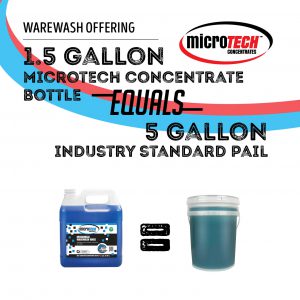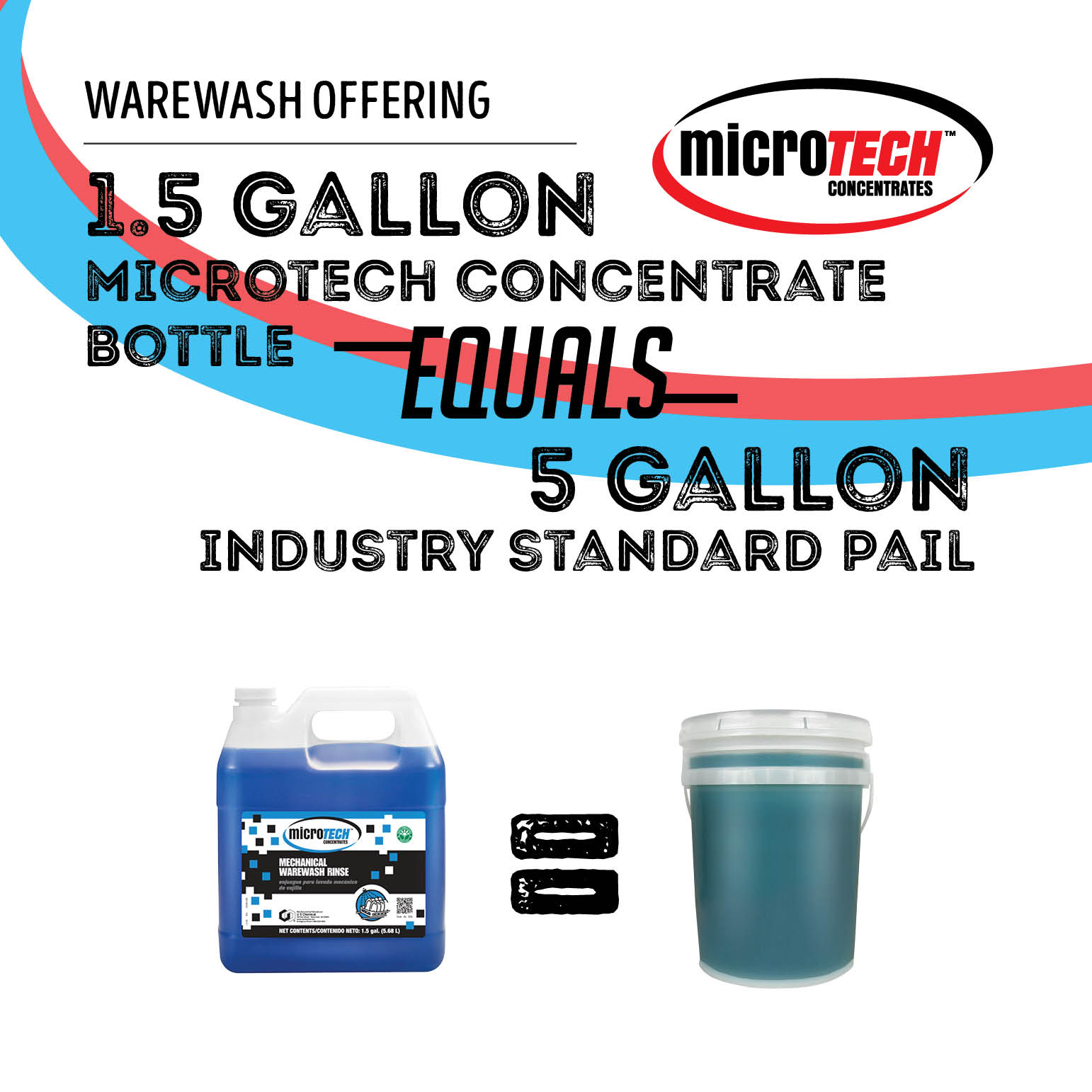5 gallon vs. 1.5 gallon

At U S Chemical we produce a line of highly concentrated cleaning products that have benefits far beyond just cost savings. Not only do these products qualify as industry leading performers, but they also provide us with an opportunity to get away from the standard 5 gallon pail. With these highly concentrated products we are able to produce product in a 1.5 gallon container which is equivalent to a 5 gallon pail. This may not seem substantial, but if we take a closer look we can discover a meaningful impact. First, let’s look at the space saving benefits of using a 1.5 gallon container vs. a 5 gallon pail.
Our 1.5 gallon containers are generally used in conjunction with wall brackets. That means the product does not need to sit on the floor, but instead can be mounted on the wall. This allows for easier cleaning and additional storage space around laundry machines and dish machines. A 5 gallon pail takes up 1,115 square inches of space whereas a 1.5 gallon container takes up 468 square inches. That’s over a 60 percent reduction in areas where space and storage may be at a premium. Not only will a 1.5 gallon container add more space around a laundry machine and dish machine but it will also reduce the amount of space needed to stock inventory. Furthermore, a 1.5 gallon container is 70% lighter than a 5 gallon pail of an equivalent product.
Next, let’s look at the environmental impact of reducing the amount of plastic that is being used by switching to a smaller container size. Researchers found that more than 500 million tons of CO2 are produced by plastic annually. This is equivalent to the amount produced worldwide by all passenger cars, motorbikes, planes, and trains combined. According to the EPA, one ounce of carbon dioxide is emitted for each ounce of plastic produced. That being said, a 1.5 gallon container produces 8.6 ounces of CO2 whereas a 5 gallon container produces 36 ounces. Not only is there a considerable reduction in CO2 emissions in the production of a smaller pack size but there is also additional reductions in transportation. We can also reduce our environmental impact by recycling any used containers. At U S Chemical we use HDPE plastic for our containers which is the most commonly recycled plastic. This safe form of plastic is simple and cost-effective to recycle for secondary use. HDPE has good chemical resistance and can be recycled into plastic lumber, furniture, and auto parts.

